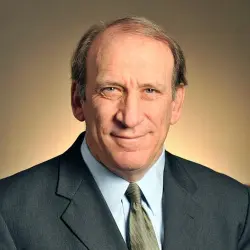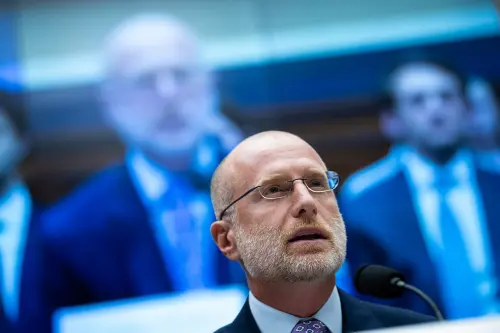This is the second of three blogs discussing the state of broadband policy as a new administration and Congress begin. The first asserted that “making America great” requires great broadband, and it discussed an infrastructure initiative to address current broadband shortfalls. This post looks at how broadband policy is likely to play out in the new administration. The third post will focus on the role of cities in assuring that communities have the foundation they will need to thrive in the 21st century global information economy.
The ascension of an administration that believes market forces are nearly always sufficient for achieving national goals and protecting consumers will have immediate implications for how regulators conceive of their roles, their willingness to approve mergers, and their willingness to use public policy to advance innovation. Among the sectors likely to feel the effects of the Trump administration’s averred market-focused philosophy is telecommunications, with broadband in particular heavily impacted.
If affordable and abundant broadband is integral to the continued growth of the American economy , then how the market reacts to Trump administration policy will determine whether the country can deliver this necessary infrastructure.
Here are the four major areas where I expect the Trump administration to impact broadband policy and my predictions for how those reforms may look.
Expect a change in how the government considers the competitive landscape
In the same way that Google appeared to be driving policy directions at the Obama Federal Communications Commission, the policy preferences of AT&T and Verizon may be a good predictor of the direction of the next one. But just as I thought it unfair and inaccurate to suggest that Chairman Tom Wheeler was in the pocket of Google, I would consider such an allegation against the Chairman Pai (Trump’s choice to lead the FCC) to be misplaced as well. The real story lies in the players’ views of the competitiveness of markets.
The Obama and Wheeler policy reflected a view that both wireless and wired broadband markets, as well as the market for key inputs such as set-top boxes and business services, were insufficiently competitive. That view is more consistent with Google’s view of the market, as its core services benefit from faster, better, and cheaper connectivity that it sees lacking in today’s markets. The Wheeler FCC, acting on its view of markets, looked for ways to increase competition, particularly from non-incumbents and smaller players.
The Trump and Pai regime are likely to view the wireless market as very competitive and the wired broadband market as sufficiently competitive, a view consistent with AT&T and Verizon’s view. This will lead to a number of advantages for AT&T and Verizon relative to current policy in their competition with smaller wireless players, competitive local exchange carriers (CLECs), and companies offering video services from “over-the-top” of the network, such as Netflix, Amazon and Google. For example, when it comes to spectrum allocations, set-asides for smaller players are less likely. In business services, the Wheeler effort to lower prices charged by what he viewed as dominant players is likely to be replaced by greater deregulation of the same players, whom the Trump FCC will see as facing significant competition.
Expect a change in the range of government oversight
The FCC’s oversight of internet service providers (ISPs) will no doubt be significantly reduced.
The most highly anticipated change, and the first priority in the telecommunications regulatory space for the industry and Republican leadership, will be to repeal the FCC’s February 2015 Title II reclassification decision. There is some multidimensional chess involved here, meaning the Supreme Court, the FCC, and Congress will all be involved and will premise their actions on the feedback loop created by the actions of the others. Ultimately, rules will be rewritten around the principles of “no blocking and no throttling,” with some forms of paid prioritization (paying for one’s data traffic to be delivered faster than others’ data) and/or zero rating (data that is not counted against a users’ data caps) allowed. The new rules will likely not include interconnection in the zone of net neutrality protections, though over-the-top video providers are likely to continue to argue for some protection against anticompetitive behavior at interconnection points. It is unlikely, however, that the government will have much sympathy for the contention that ISPs are imposing data caps in an anticompetitive manner.
In the near term, these changes are unlikely to affect the services consumers receive or the prices they pay. The impact in the future, however, is harder to gauge. In the Title II decision, the FCC gave itself broad powers to regulate future, unspecified practices that it might view as harming consumers or over-the-top service providers. The Trump agenda will include eliminating that discretion by strictly limiting the FCC’s rulemaking capacity and focusing the agency on enforcement. The result is likely to be increased leverage in business negotiations for those with broadband distribution assets.
Expect a change in the center of gravity from the FCC to Congress
Since Congress passed the 1996 Telecommunications Act, the FCC has been the center of gravity for most major policy actions affecting telecommunications. Now, the power will move back to Congress, where three potential pieces of legislation could impact deployment and other concerns in the sector.
The most important legislation is a tax bill, which could have diverse impacts on companies given their dissimilar balance sheets, debt structures, revenue mixes, and other factors that could make some winners and some losers. The interesting policy question is what do the companies do with the extra after-tax income the legislation would create? While the companies often argue that the revenue would lead to greater investment in networks, the money could alternatively be used for acquisitions, dividend hikes, share buybacks, raises for executive, or larger cash reserves. But it is unlikely, in my view, to materially change the investment math that makes deployment of next-generation networks so slow. (There are also likely to be unintended consequences of tax reform; for a good example, it is both useful and amusing to consider this 1999 critique of Senator Bill Bradley’s 1986 tax reform effort, written by a well-known New York real estate developer.)
The second piece of legislation is the potential infrastructure bill. Some have raised the question of whether Trump’s infrastructure plan will involve massive investment in broadband infrastructure to compete with cable and telco incumbents. This is possible, but unlikely. First, Trump’s $1 trillion figure is not $1 trillion of direct government investment; a large portion of it will likely come in the form of tax breaks designed to encourage investment. Even if allowed, such tax breaks are unlikely to be sufficient to enable over-builders –those who would deploy new networks to compete with incumbent cable and telco networks–to succeed. Second, Republican leadership is unlikely to support using the tax credits to support investments directly in competitive alternatives and will likely push investment toward Universal Service type investments, which expand broadband to regions and locales that currently have no or limited broadband availability. While Congress is likely to consider the intersection of USF and infrastructure stimulus, there is no clear plan yet for using infrastructure dollars to address the universality goals currently funded through the FCC’s universal service plans. (For a discussion of potential approaches to broadband under a Trump infrastructure bill, please see the first blog.)
The third bill would be a focused telecommunications bill, or a series of such bills, on spectrum, Title II reform, and FCC process reform. These will be largely consistent with the general view of Republicans of the limited need for government intervention in presumably competitive markets. They all will have the impact of reducing FCC authority. While that will not have a significant impact as long as Republicans are in charge, it will make it tougher for Democrats to reassert regulatory control when the power shifts again.
Expect an increase in mergers and a change in merger reviews
What is easy to predict is that there will soon be a wave of mergers in the sector. Four factors—fear of the Obama Department of Justice, uncertainty about its specific leadership in a new administration, the current incentive auction (which restricts involved parties from talking to each other), and the current broadcast ownership rules—have been suppressing the desire of the companies and their sources of capital to attempt mergers. Those factors will be gone or loosened by the spring, likely resulting in a wave of transactions. Each transaction will have the paradoxical effect of providing incentives for other parties to engage in similar consolidation and for government authorities to reject the kind of deals they just approved, as a second or third deal could cause a market to become anticompetitive.
Predicting the actual approach is a bit trickier, as this is the one area where candidate Trump spoke differently than he did as president-elect. As a candidate he promised to block the AT&T/Time Warner Entertainment deal and break up Comcast/NBC-Universal, as well as bring an antitrust action against Amazon. All three are possible but unlikely, with the latter two being highly unlikely. The more likely outcome is that the Trump Justice Department and FCC will be significantly friendlier to mergers than the Obama ones were.
Two caveats are in order. First, there is a paradoxical relationship between regulation and antitrust. That is, the presence of various kinds of regulations has been offered as a reason not to be concerned about certain kinds of consolidation. For example, at the recent Senate hearing on the AT&T/Time Warner deal, some senators raised concerns about discriminatory treatment of content and its impact on competitors. Proponents defended the deal by suggesting that both economic incentives and regulation would make anticompetitive impacts unlikely. However, by the time the authorities are set to make a decision on the transaction, the effort to remove some of those regulations will be well underway. In short, the effort to simultaneously remove regulations and barriers to consolidation will create some tension as to the relationship between the two efforts.
Second, there is still a big unknown as to what Trump himself will do and say about these mergers. Of course, his ability to roil markets by tweeting is already notable, but moving government forces is another matter. For example, after meeting with Trump in December, Robert Johnson, the former chief executive officer of BET, told CNBC he sensed that the president “is going to sit down and negotiate” the AT&T/Time Warner deal just as he did the Carrier jobs deal. I don’t doubt the accuracy or sincerity of Mr. Johnson’s account, but there isn’t a clear path for a President Trump to involve himself in the negotiations. He could tell the Justice Department what to do or even invite the companies to discuss the merger with him personally, but ever since Richard Nixon stifled the antitrust investigation into ITT, a major donor, White House interference in antitrust cases has been seen as a big no-no. Perhaps that precedent no longer constrains actions, but I think even some Republicans would express concerns (far more than in the case of Carrier) for breaching that wall. Further, while AT&T has various government contracts, Trump would have little leverage on antitrust grounds, as the Justice Department staff (and the courts) will likely see the transaction as a vertical deal with limited grounds for rejection. Of course, Trump could more easily tell the FCC what to do, but it appears that AT&T is structuring the deal to avoid FCC jurisdiction. Trump may think he is going to negotiate the deal, but the way things are going, he’ll more likely end up sitting at a poker table with no cards, no chips, and no cash.
What doesn’t change
Though the dominant theme, particularly in the first six months, will be change, there are some critical areas where a new administration will not change policy or market directions. These include:
Cable/telco competition. Nearly all Americans get their fixed home broadband from either a cable provider or a telephone company. Cable is winning, with about a 62 percent market share, and that share is rising. While AT&T and Verizon will be able to improve their positions against other players through regulatory changes, there are limited federal opportunities for AT&T and Verizon to improve their competitiveness with cable through regulation. The major area is with 5G deployment, though the policy issues that affect timing and cost are largely state and local matters. As it did at the Senate hearing last month, AT&T argues (and presumably Verizon would agree) that merger policy is also a key federal policy for increasing competition to cable. But we should not expect that AT&T and Verizon’s increased ability to influence federal policy would enable the companies to improve their market position against cable in the near and mid-term, as federal policy does not affect the core cable advantage of having the cheapest network for transmitting the most bits and the most efficient means to upgrade that network.
Spectrum. There is a bipartisan consensus that our economy will need more spectrum to handle a number of developments, from current escalating demand for mobile video to such future developments as 5G, drones, autonomous vehicles, robotics, and the Internet of Things. The Obama Administration and Republicans collaborated on spectrum, leading to new spectrum availability through the AWS-3 and Incentive Auction, FirstNet, and the Spectrum Futures proceeding. That bipartisan approach is likely to continue with an increased focus on how to reallocate spectrum from government use to other uses. (A transcript of a Senate hearing in 2015 on that subject, at which I testified, can be found here.)
Cybersecurity. Cybersecurity is going to increase in importance for the economy overall, and public policy will play a key role in how it develops. Other than the partisan reaction to election tampering, the issue is usually bipartisan. Unlike in other areas, one can look at the recent Obama White House Commission on Enhancing Cybersecurity Report to see the likely issues the Trump Administration will face and its likely initial approach.
The future. Emerging trends in the Internet of Things and artificial intelligence raise a number of issues. Some of these I pointed to in an earlier blog on emerging issues with big data. Others were noted in a White House report this fall on artificial intelligence. None of these issues are simple, nor do they fall neatly into a liberal/conservative framework. They are still nascent but are likely to be front and center in the next few years in both the market and public policy. The Obama Administration provided some thought leadership but did not—nor should it have—laid down irreversible tracks for the likely policies to guide the development of these technologies.
The Brookings Institution is committed to quality, independence, and impact.
We are supported by a diverse array of funders. In line with our values and policies, each Brookings publication represents the sole views of its author(s).






Commentary
Implications of a Trump White House for broadband policy
February 8, 2017